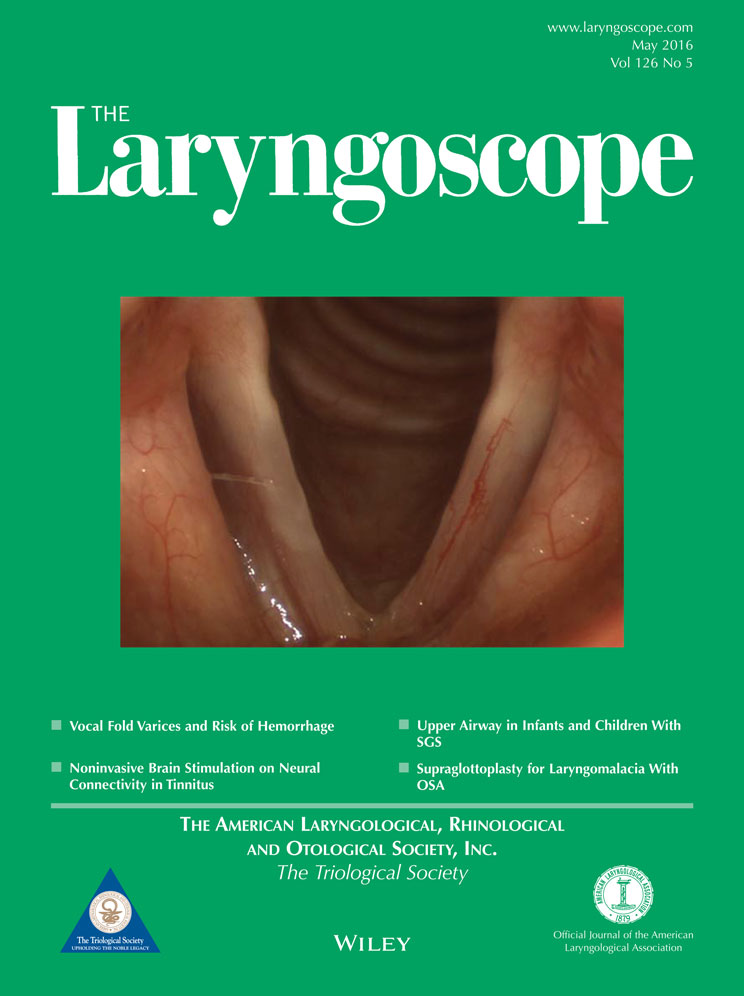Quantitative assessment of the upper airway in infants and children with subglottic stenosis
This work was supported by NIH/NHLBI R01HL105241; NIH CTSA at UNC, 1UL1TR001111; and NIH/NIBIB 5P41EB002025.
The authors have no other funding, financial relationships, or conflicts of interest to disclose.
Abstract
Objectives/Hypothesis
Determine whether quantitative geometric measures and a computational fluid dynamic (CFD) model derived from medical imaging of children with subglottic stenosis (SGS) can be effective diagnostic and treatment planning tools.
Study Design
Retrospective chart and imaging review in a tertiary care hospital.
Methods
Computed tomography scans (n = 17) of children with SGS were analyzed by geometric and CFD methods. Polysomnograms (n = 15) were also analyzed. Radiographic data were age/weight flow normalized and were compared to an atlas created from radiographically normal airways. Five geometric, seven CFD, and five polysomnography measures were analyzed. Statistical analysis utilized a two-sample t test with Bonferroni correction and area under the curve analysis.
Results
Two geometric indices (the ratio of the subglottic to midtracheal airway, the percent relative reduction of the subglottic airway) and one CFD measure (the percent relative reduction of the hydraulic diameter of the subglottic airway) were significant for determining which children with SGS received surgical intervention. Optimal cutoffs for these values were determined. Polysomnography, the respiratory effort-related arousals index, was significant only prior to Bonferroni correction for determining which children received surgical intervention.
Conclusions
Geometric and CFD variables were sensitive at determining which patients with SGS received surgical intervention. Discrete quantitative assessment of the pediatric airway was performed, yielding preliminary data regarding possible objective thresholds for surgical versus nonsurgical treatment of disease. This study is limited by its small, retrospective, single-institution nature. Further studies to validate these findings and possibly optimize treatment threshold recommendations are warranted.
Level of Evidence
4 Laryngoscope, 126:1225–1231, 2016




